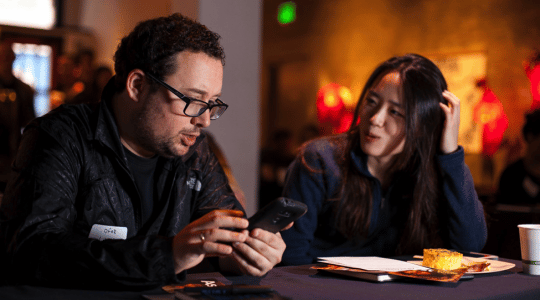While nearly 1 billion people were tuned into the Oscars on Sunday night to celebrate the biggest movies of the year – and the people that made them happen – advertisers were spending $1.7 million for every 30 seconds of ads shown during the three hour broadcast.
And while nearly 1 billion were watching the ceremony on television, millions were also tuned into Twitter to tweet about Seth MacFarlane’s banter, the best and worse dressed of the night – and of course, the ads. While the audience for the Oscars isn’t quite the same as the Superbowl, the hype about this year’s Oscar ads – including a two minute spot for Grey Poupon – had more consumers than usual eager to see the commercials as much as the ceremony. Consumers who were also simultaneously on social media commenting about the ads.
During this year’s Superbowl Oreo used “real time marketing” to capitalize on the media attention that resulted when the Superdome experienced a blackout. Earlier in the broadcast Oreo had aired a TV ad with a social media tie-in that helped them gain new fans and followers. When the blackout occurred Oreo leveraged their increased Twitter following by tweeting out a relevant picture reminding them that you “can still dunk in the dark”. This picture went viral almost immediately and at last count has been retweeted over 16,000 times. The keys to Oreo’s viral success with the “dunk in the dark” campaign was an already captive audience and an ad that fit an emerging, real time story-line This was a real time marketing campaign that we had rarely seen before, but many of us knew it would only be a matter of time before other brands leveraged the next opportunity to jump on the bandwagon.
During this year’s Oscars one brand – Grey Poupon – stood out as a stellar example of leveraging both traditional advertising and real time marketing to capture a new audience. Grey Poupon recreated their classic “Pardon Me” television ad from 1981 and at the end of the commercial encouraged viewers to visit GreyPoupon.com to watch “The Lost Footage” of the ad, which showed what happened after the condiment was handed over. The campaign also featured the hashtag “#PardonMe” – one of the few Oscar ads that featured any social signals – and at GreyPoupon.com viewers of “The Lost Footage” were then encouraged to watch it again to win prizes and share it via Facebook, Twitter and Pinterest. Grey Poupon effectively captured an audience on TV and then continued to tell the story on the second screen, converting their TV audience into new fans and followers online.
Well aware that Twitter engagement during the Oscars would be high, several brands (e.g. JC Penny, Pantene, Samsung) spent their advertising dollars running promoted trends campaigns on Twitter, in addition to their TV ads. On the other hand some brands chose to capitalize on real time marketing without the benefit of a TV ad during the broadcast. These brands paid tribute to winners (such as this nod to Best Supporting Actor Christoph Waltz from Stella Artois) and celebrations, such as that for James Bond, which was honored by brands including Oscar Meyer and Tablespoon. These campaigns that aimed to leverage real time marketing with a catchy picture or animation seemed more like a desperate attempt to go viral, rather than a real strategic approach at marketing. As Oreo’s success during the Superbowl demonstrated, real time marketing requires a captive audience and marketing which is consistent with both the brand’s messaging and the emerging story.
On Sunday night, brands which leveraged both traditional advertising and the second screen to tell their story – such as JC Penney and Samsung – had the most success with real time marketing. Tweets from these brands averaged more favorites and retweets, and their accounts gained more followers than brands that attempted real time marketing campaigns via the second screen only. As real time marketing becomes more mainstream, brands must realize they need to reach consumers on both screens to have a truly successful campaign. To do this they must captivate the television audience with a well done ad, so that those Twitter followers and Facebook fans who are watching are then ready to engage on the second screen. By doing this they can continue to tell these new fans a story that connects with them, and likely convert them into customers. The goal of a real time marketing campaign is not to collect a few page views or retweets. The goal of any marketing campaign, real time or otherwise, is to gain more customers and drive conversions.
Author
Becky is the Senior Content Marketing Manager at TUNE. Before TUNE, she led a variety of marketing and communications projects at San Francisco startups. Becky received her bachelor's degree in English from Wake Forest University. After living nearly a decade in San Francisco and Seattle, she has returned to her home of Charleston, SC, where you can find her enjoying the sun and salt water with her family.




[…] has rendered its verdict: Despite receiving the message that it’s all about Oreo-style “real time marketing“, brands advertising and promoting themselves during last night’s Academy Awards (or […]